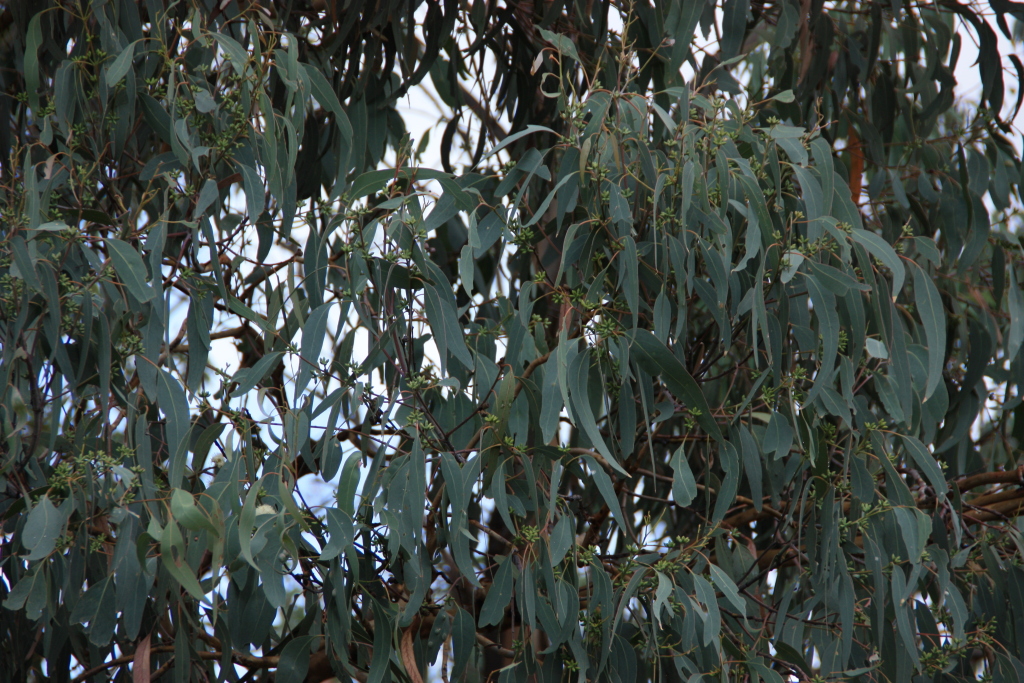Eucalyptus nortonii
(Blakely) L.A.S.JohnsonTree to 15 m tall; bark rough over whole trunk and branches, fibrous, becoming coarse and thick. Juvenile leaves sessile, opposite for many nodes, orbicular, to 11 cm long, 10 cm wide, leaves and stems glaucous; adult leaves petiolate, alternate, lanceolate, 15–25 cm long, 1.8–3 cm wide, concolorous, dull, blue-green or grey-green, reticulation dense, with scattered, somewhat obscure oil glands. Inflorescences axillary, unbranched; peduncles to 1 cm long, 7-flowered; buds sessile, ovoid, usually glaucous, to 1 cm long, 0.5 cm diam., scar present; operculum conical; stamens irregularly flexed; anthers dorsifixed, cuneate; ovules in 4 vertical rows; flowers white. Fruit sessile, cupular, usually glaucous, to 1 cm long, 0.9 cm diam.; disc descending; valves 3(4), rim level or below. Seeds grey-brown to blackish, flattened-ellipsoid, reticulate, hilum ventral. Flowers Aug.–Apr.
VVP, VRiv, GipP, Gold, CVU, NIS, EGL, EGU, HNF, MonT, VAlp. Also ?SA, NSW. In Victoria in drier mountain areas from Suggan Buggan to the upper Murray River, Mt Baranduda, Whitfield, and also further west from Castlemaine to the Pyrenees.
Closely related to the glossy, large-leaved E. goniocalyx and the 2 species intergrade e.g. near Clunes. Coppice growth of E. nortonii is always heavily glaucous.
Brooker, M.I.H.; Slee, A.V. (1996). Eucalyptus. In: Walsh, N.G.; Entwisle, T.J., Flora of Victoria Vol. 3, Dicotyledons Winteraceae to Myrtaceae, pp. 946–1009. Inkata Press, Melbourne.
 Spinning
Spinning

